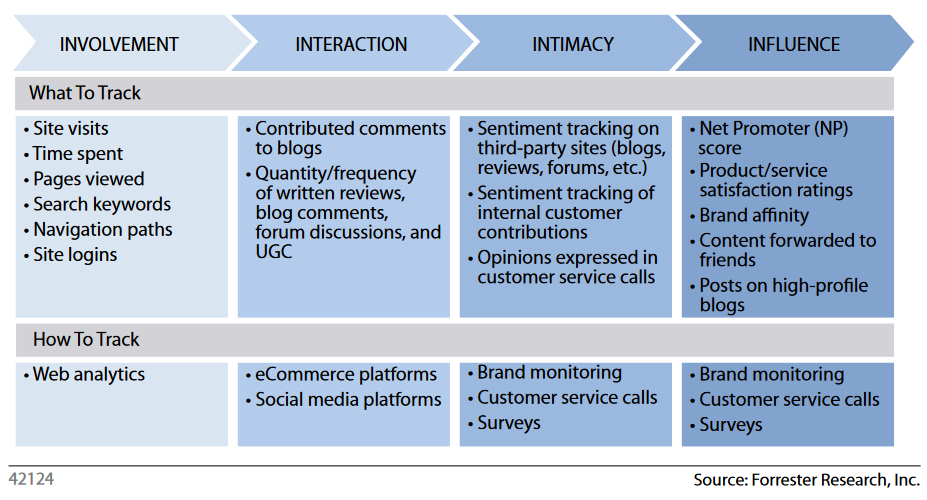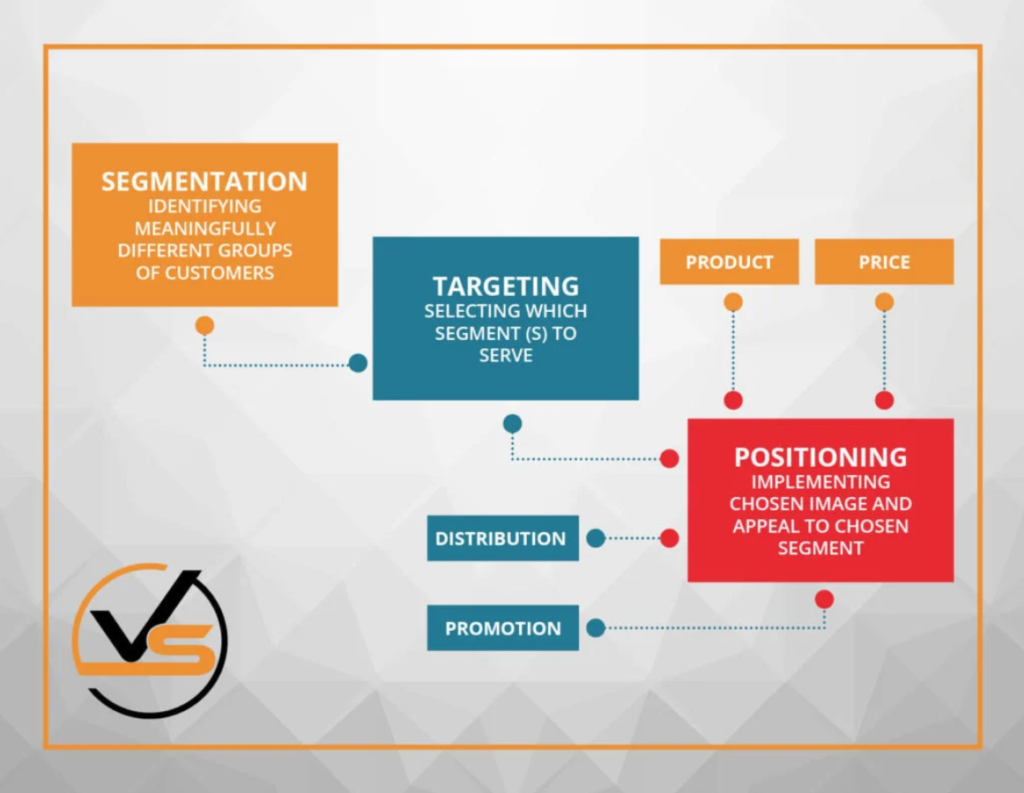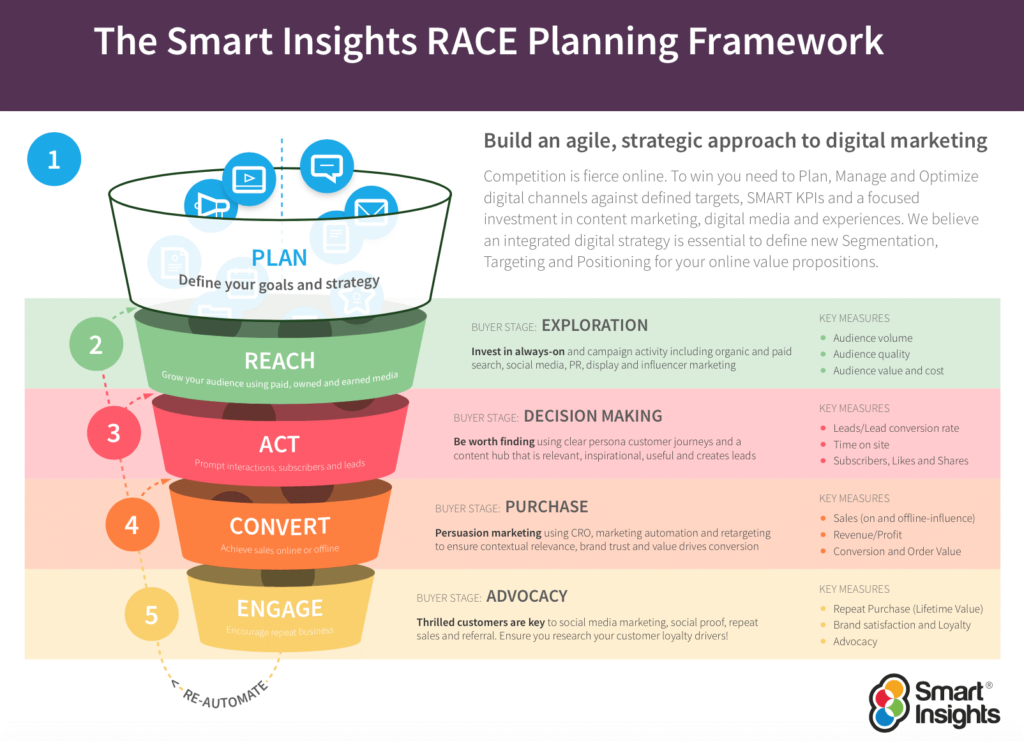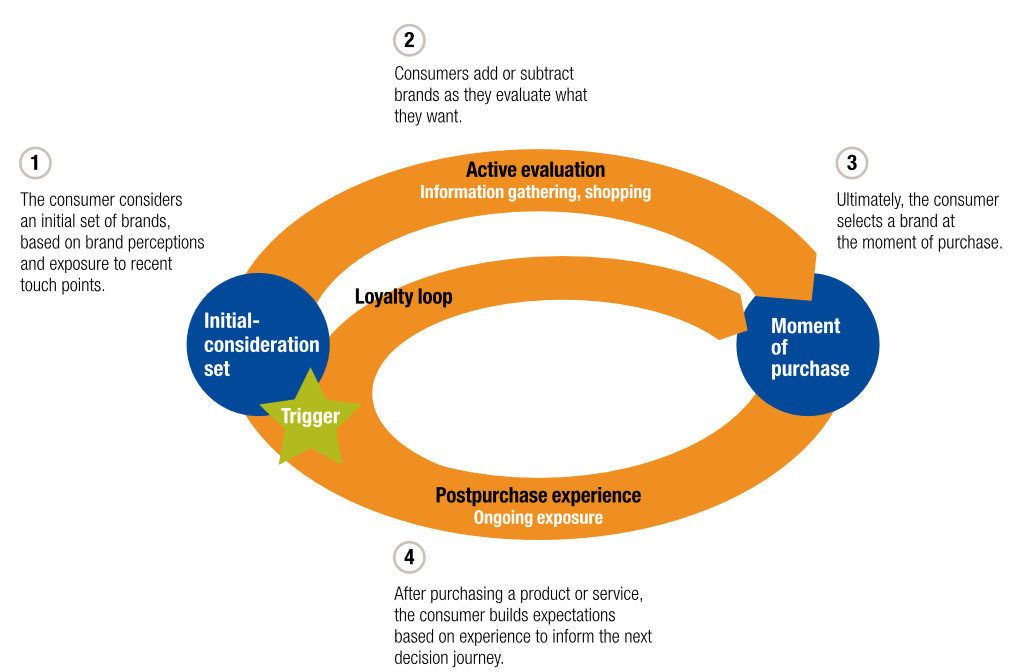
What Marketing Models Can Help in Developing Your Strategy?
There are a number of marketing models out there that can be used to develop a company’s own marketing strategy. And yet, many businesses follow the same formula…
They make sure they’ve got their social media running, their ads humming, and their content going, only to be disappointed by the results. Their efforts fail to deliver a positive ROI or sales on autopilot, and they feel both bewildered and disillusioned. And after they take a break to soothe their pain, the failed marketing cycle begins all over again.
This scenario is all too common among businesses that throw hundreds of hours and thousands of dollars at marketing tactics without considering the bigger picture. That’s because marketing isn’t magical and doesn’t require fairy dust to produce an ROI. The “wish and hope” method does not work.

And for my next trick, I will pull unlimited sales and leads out of my hat, along with a positive ROI, high-performing Facebook ads, and an automated funnel that brings in sales on autopilot. Abracadabra!
Just because you are using the latest and greatest marketing tactics does not mean you will be successful. Marketing tactics are not standalone entities. They MUST be part of a broader strategy to work correctly. The good news is that you can create a well-organized, highly effective plan that is primed for growth and not reliant on magic.
In this article, we will talk about some marketing models you can adopt to build a marketing strategy ready to help you grow.
Why Is It So Hard to Get Results from Marketing?
Too often, clients come to us having tried multiple digital marketing tactics with nothing to show for it. Are the tactics the problem? Not at all. However, the tactics are meaningless unless they are a part of an overall marketing strategy.
Maybe you already have a strategy but aren’t using the right marketing model. You could be halfway there and just need a push in the right direction to get the results you desire.
It's not your fault, though. Strategic marketing and planning are complicated, and it's not something you pick up quickly after reading a few top articles. Strategic marketing requires a set structure or model that works for your company, and your marketing model may even be different from others. But, if you adopt the right one, it will help you navigate what’s working and what isn't. Further, it will provide a road map to follow so you aren't chaotically trying marketing tactics in the hope something will magically pay off.
Why You Need a Marketing Model
You probably want to develop a marketing plan, but you don't know where to start, or think the one you have is ineffective. Nearly 40% of marketers do not think their marketing strategy is effective. This failure is primarily due to a lack of planning and digital marketing model—or using the wrong model to achieve your business goals.
Also, if you are more accustomed to traditional marketing models, you may find yourself lost in the current digital world. Once the COVID-19 pandemic hit, brick-and-mortar businesses had to pivot their marketing strategy to digitalize. Otherwise, they would have run out of business.
Digital isn’t a separate marketing subject, however. Digital marketing still uses age-old marketing principles; you just have to adapt your marketing to a digital world.
What Is a Marketing Model?
A marketing model is a framework that describes how consumers find, interact with, engage with, and buy from you, and compares these data points with your competition. It outlines the platforms, goals, and foundational structure that will guide your marketing activity and operations, as well as allow you to craft a powerful marketing strategy.
A marketing model also helps you communicate the basis for your strategy and explains why you are doing what you are doing. You should never need to ask the question, “Why are we doing this tactic?” If so, you do not yet have the right marketing model and strategy ready to supercharge your growth.
Choosing the right marketing model is vital because it provides the means from which to build your strategy. And it starts by looking at some of the most popular marketing models that have been introduced over the years…
9 Marketing Models to Fuel Your Marketing and Build Your Strategy
The models we will discuss below do not just focus on digital marketing. Some are purely digital focused, while others incorporate traditional marketing practices. Adapt each model to focus on digital or offline marketing, or both.
Your organization may also use more than one model (this is common) to develop your marketing strategy depending on the function of each model and what part of the strategy it represents. Some models will be more comprehensive to help you build your entire strategy, and others will be complementary to assist in market evaluation and assessing your current state as a business.
With all that out of the way, let’s dive in…
Porter’s 5 Forces
Michael Porter, a Harvard Business School professor, created the Five Forces framework in 1979. Since then, it’s been regarded as one of the best tools to examine your competition and assess your marketing strategy’s profitability.
Knowledge is power. And when you understand at a deep level what forces comprise the competitive environment, you can adjust your strategy and industry according to your findings.
Porter identified five forces comprising the competitive environment that directly affect your profitability:
- Industry Competition: This refers to your rivals’ size and how this directly affects your pricing strategy and ability to dominate a market.
- Supplier Power: This analysis looks at the suppliers in your industry and the power they have to increase prices and lower your profits. For example, the fewer suppliers in the market, the higher the prices because there is less competition. Higher supplier costs will directly affect your profit margins.
- Customer Power: Customers can also drive pricing based on how many customers a company has, their order size, and the cost to acquire them. The more customers, the more power.
- Threat Potential of Product Substitutes: This analysis assesses the threat of another product replacing yours. The more substitutes available in the market, the weaker your product and company, which will drive prices down.
- Threat Potential of New Entries: Is it easy and cost-effective for another company to enter your market? If so, there’s a greater chance companies will enter, which can weaken your market position. If it’s difficult and expensive to enter your market, fewer companies will enter, keeping your position healthy and leveraging power with pricing and terms.
Forrester’s 5Is
The 5Is method was developed by Forrester, a market research company that focuses on business applications of digital technology and media. Based on their research, Forrester claimed that marketers need to rethink the marketing funnel and consider engagement as a significant factor.
It shouldn’t be marketers who determine how consumers act or lead communication. Instead, marketers should observe consumer communication engagement with their company and incorporate these learnings into the marketing funnel. For example, if you are just tracking sales at the end of the funnel, you could miss out on business-boosting data. Why not track the people who are influencing consumers to buy? That one customer who bought only one item but leaves reviews urging hundreds of other consumers to purchase from you may be more valuable than the one customer who purchased a lot of merchandise but didn’t leave a review.
Forrester crafted the 5Is (there are actually only four) below to observe the consumer’s activity with a brand.

Forrester’s four components of engagement
- Involvement measures how the customer gets involved with the brand, which can be measured with website analytics such as page views, website traffic, time on site, and more website activity.
- Interaction measures customer actions that involve your brand such as blog comments, reviews, user-generated content, email sign-ups, and more.
- Intimacy delves into the emotions behind the interaction and includes sentiment tracking and customer service calls or surveys to understand behavior better.
- Influence measures brand loyalty by observing factors such as product ratings, Net Promoter Score (NPS), word-of-mouth marketing, and other means by which customers recommend your product or brand to others.
The 7Ps of the Marketing Mix
The 7Ps of the marketing mix is helpful to companies assessing the competitive landscape and identifying issues with their marketing.
Initially the 4Ps of marketing (product, place, promotion, and price), the 7Ps of marketing were first mentioned in Basic Marketing. A Managerial Approach authored by Jerome McCarthy in 1960. Since then, Boons and Pitner added three more Ps to address service-based companies (people, physical evidence, processes).
- Product: The tangible product you sell and profit from. Run a market analysis and consider its use, variants, quality, and other features before developing it.
- Place: Where you will sell the product, whether offline, online, or both.
- Promotion: How will you promote the product? What channels will you use?
- Price: What price is your product? Are there any upgrades or discounts offered? How will you position the product? What are the payment options?
- Process: The operations behind the business, such as product delivery, customer service, research and development, etc.
- Physical evidence: The product experience and what this looks like (offline and online stores, staff experience, customer experience, packaging, etc.)
- People: Every person involved with your company, from internal staff to external customers.
Segmentation, Targeting, and Positioning (STP)
We talk about this one a lot here at Viral Solutions because it is highly effective and when done correctly, it will save you time and money on failed marketing tactics.
These three stages (STP) allow you to discover customer segments and target those best suited for your product and services before you market to them.

- Segmentation: Don’t market to everyone, or you will head toward business failure. Instead, segment your market into distinct groups that are more interested in buying what you’re selling. Learn more about segmentation here.
- Targeting: Once you create segments, the next step is to target them. This involves selecting which segment to target and focusing your marketing there. Learn more about how to target a winning segment.
- Positioning: Your market position details how you want to be perceived by your customer segments as it relates to your brand product and its attributes. We teach you more about market positioning here and here.
The RACE Planning Framework
We are big fans of the RACE Framework too because it provides a holistic view of marketing, from strategy to execution.
Created by Smart Insights, the RACE Framework focuses on leveraging digital marketing to increase sales throughout every stage of the funnel, as seen below.

The first step is to create an overall marketing plan and strategy that aligns with your goals and includes KPIs and company objectives. Then, use the four stages of the planning framework below to execute that plan.
- Reach: Spread awareness of your brand and increase visibility across all of your online channels via owned, paid, or earned media.
- Act (Interact): Encourage stellar customer experiences to increase customer interaction with your brand on every site you engage with your prospects and customers.
- Convert: Increase conversions and encourage customers to take the actions you want them to.
- Engage: Increase customer loyalty after the sale by encouraging customers to repurchase and spread the word, recommending your product or service to others.
We cover the RACE Planning framework in much more detail in the following articles:
Part 1: How to Reach Potential Customers
Part 2: How to Interact With Your Target Audience
Part 3: How to Convert Visitors Into Customers
McKinsey’s Consumer Decision Journey Model
In 2009, after interviewing 20,000 businesses, McKinsey & Company turned the purchase funnel on its head and suggested a loop model. This contrasts with the linear model that was widely accepted and practiced (and still is).

The McKinsey model is still widely used today. While the loop purchase funnel steps are similar to the linear funnel, this model provides an alternative perspective and feeds people back into the funnel to keep them engaged. It introduces more consumer touchpoints and focuses on customers who may or may not be engaged enough with your brand to repurchase.
Additional Marketing Models and Principles
Below are three additional marketing models that will help you evaluate a market, develop a complete marketing strategy, or inform your marketing strategy to make it more effective.
Unique Selling Product (USP): The USP is a unique differentiating factor of your product or brand. It’s what makes you stand out in the sea of competitors and attract loyal customers.
SOSTAC model: Created by Paul Smith of PR Smith Marketing, the SOSTAC model focuses on six business elements: situation analysis, objective, strategy, tactics, action, and control. It starts by assessing where the business is and crafts goals from this vantage point. The next step is to formulate a big-picture strategy and develop tactics to accomplish this strategic plan. Lastly, take action and execute the plan while tracking KPIs and analyzing results. This model is not too different from the basic steps most businesses use to create, implement, and track a marketing strategy, so it’s a good one to research.
SWOT analysis: SWOT is not necessarily a marketing model in itself, but it can inform your marketing strategy during the initial stages. SWOT (strengths, weaknesses, opportunities, and threats) can help you assess your current state, which is necessary to build marketing goals.
What You Need to Know About Marketing Models
We covered a lot in this article, and we didn’t even scratch the surface. There are dozens of marketing models to choose from, but we outlined some of the top ones.
Let’s briefly summarize what we covered:
- Why you need a marketing model
- What a marketing model is and how it helps you develop a strategy
- Nine marketing models and principles
- Porter’s 5 Forces
- Forrester’s 5Is
- The 7 Ps of the Marketing Mix
- Segmentation, Targeting, and Positioning
- The RACE Planning Framework
- McKinsey’s Consumer Decision
- Unique Selling Product
- SOSTAC model
- SWOT analysis
Just as important as developing a sound marketing strategy is using the right model(s) for your business, but it’s easy to get confused with so much information. Our goal is to provide some preliminary information to help you choose a marketing model so you can create a rock-solid marketing strategy.
If you aren’t happy with your sales and business growth, either you don’t have a solid marketing strategy or aren’t using the correct marketing model. If you need help assessing your current state of marketing and providing some structure and strategy to fuel growth, it’s what we do best!
In our years of helping businesses, we’ve created more winning marketing strategies than we can even count. And we’d love to add you to our winner’s board! Contact us here for a free consultation.


